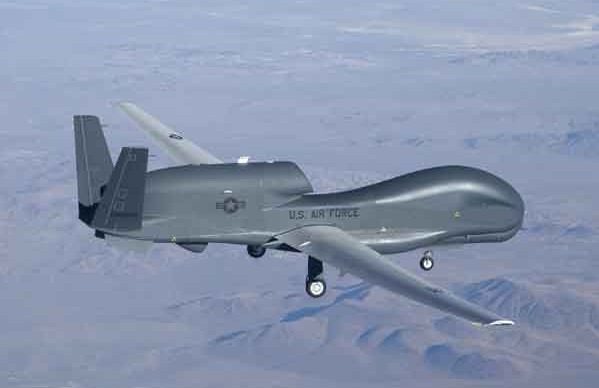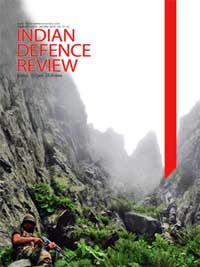The term ‘drone’ has hummed itself into aviation lexicon and is universally used to describe flying objects not carrying a human pilot; some other terms in general use for them are Unmanned Aerial Vehicle (UAV), Unpiloted Air System, Remotely Piloted Aircraft (RPA) and aero-models. Their size varies from barely visible objects to huge vehicles capable of flying for hundreds of hours outside the earth’s troposphere (for example, NASA’s Helios). As UAVs use the medium of the air for their movement, the International Civil Aviation Organisation (ICAO), the expert, global, UN agency on aviation, was constrained to issue a Circular 328 entitled Unmanned Aircraft Systems (UAS) in 2011. It defines Unmanned Aircraft as, “an aircraft which is intended to operate with no pilot onboard and a UAS as an aircraft and its associated elements (ground control station, data link) which are operated with no pilot onboard.”
…in case of a major accident, there could be a hull loss but no precious lives of pilots or other crew would be sacrificed. So will unmanned flight make the combat pilot redundant in the years to come?
In parallel with the spectacular advances in manned aircraft, ever compounding levels of aerospace technology have nurtured the unmanned aerial platform into adulthood. As can be expected, commercial avarice has guided the tenor and texture of unmanned platforms for civilian uses (an aerially delivered pizza is around the corner any moment!) while military zealousness has dictated the progression of unmanned flight from simple “eyes in the sky” applications to vastly superior, surgically competent, and attractively cost-effective aerial platforms capable of most tasks possible by manned aircraft.
As an illustration, a US Global Hawk UAV reportedly returned from the war zone in Iraq under its own power to Edwards Air Force Base in California (the normal mode of transportation on the same route would have been onboard a C5). Linked via satellite, the Global Hawk is controllable via satellite, its control centre located in the US. It can taxi out, take off, fly a mission, return, land and taxi back on its own. It can stay airborne for almost two days at altitudes above 60,000 feet, enter a mission zone at very high speeds and fire its onboard missiles. There is no radio communication required with an onboard pilot as all elements necessary for the mission are linked. Moreover, there are no pilot related (psychological and physiological) problems normally associated with such long duration missions.
Finally, in case of a major accident, there could be a hull loss but no precious lives of pilots or other crew would be sacrificed. So will unmanned flight make the combat pilot redundant in the years to come?
The ICAO is yet to publish any Standards and Recommended Practices (SARPs) in respect of use of UAS…
A Drone by Another Name
The term ‘drone’ has hummed itself into aviation lexicon and is universally used to describe flying objects not carrying a human pilot; some other terms in general use for them are Unmanned Aerial Vehicle (UAV), Unpiloted Air System, Remotely Piloted Aircraft (RPA) and aero-models. Their size varies from barely visible objects to huge vehicles capable of flying for hundreds of hours outside the earth’s troposphere (for example, NASA’s Helios) . As UAVs use the medium of the air for their movement, the International Civil Aviation Organisation (ICAO), the expert, global, UN agency on aviation, was constrained to issue a Circular 328 entitled Unmanned Aircraft Systems (UAS) in 2011. It defines Unmanned Aircraft as, “an aircraft which is intended to operate with no pilot onboard and a UAS as an aircraft and its associated elements (ground control station, data link) which are operated with no pilot onboard.”
The term Remotely Piloted Aircraft (RPA) is used by ICAO to define an aircraft piloted by a licensed “remote pilot” situated at a “remote pilot station” located external to the aircraft (i.e. ground, ship, another aircraft, space) who monitors the aircraft at all times and can respond to instructions issued by the ATC, communicates via voice or data link as appropriate to the airspace or operation, and has direct responsibility for the safe conduct of the aircraft throughout its flight. Thus, the RPA is a subset of unmanned aircraft and so, while UAS is used by ICAO as an all-encompassing term, the RPA is only the piloted part of UAS. The ICAO is yet to publish any Standards and Recommended Practices (SARPs) in respect of use of UAS; consequently, the use of any nation’s air space by UAS is currently regulated by several shades of grey.
As far as UAVs are concerned, their use in space presents the advantage of ignoring physiological restraints related to the pilot…
In the military domain, the US Department of Defence (DoD) defines UAV as, “powered aerial vehicles sustained in flight by aerodynamic lift over most of their flight path and guided without an on-board crew. They may be expendable or recoverable and can fly autonomously or piloted remotely.” It may be mentioned here that a military UAV would carry some lethal or non-lethal payload. Interestingly, the US DoD definition would, technically speaking, permit a cruise missile (which is ‘expendable’) to be a UAV.
However, in general, single use missiles are excluded from the UAV ambit. The term UAS was first officially used by the US Federal Aviation Authority (a civil aviation regulator) in early 2005 and was subsequently adopted by US DoD that same year in their Unmanned Aircraft System Roadmap 2005–2030.
Technological Aspects
The use of air as a medium for military activity has seen a gradual distension of the air envelope around the globe into space, with a consequent need for the term ‘air power’ to be modified to aerospace power although the former continues to be used in most military contexts. It may be mentioned here that as far as UAVs are concerned, their use in space presents the advantage of ignoring physiological restraints related to the pilot; thus the design for unmanned aircraft does not need to cater for a suitably pressurised, air conditioned space for the pilot.
Nor does it have to be limited in its agility and manoeuverability by the physical limitations that a pilot can withstand in terms of ‘g’ forces, a factor that severely limits the turning performance of an aerial platform to specifications much lower than those permitted by leading edge of aerospace technology.
The current technological levels of sensors, artificial intelligence, robotic cognitive ability and learning capacity of unmanned systems are not yet geared up for taking over all functions that a trained human brain can perform.
The machine need not be limited by human endurance (present unmanned aircraft can fly for days in a single sortie) nor would it need precious space onboard to accommodate one or more crew members along with adequate “breathing space” around them. Moreover, as mentioned earlier, if there is no human crew onboard, there is no risk of loss of life or limb in mishaps.
The need to have a human being onboard fights lasting more than a couple of hours in a combat air craft cockpit throws up some queer problems. Have you ever wondered how a fighter pilot, the epitome of manliness, would react if he were to be told that, before he dons his G-suit, he needs to wrap around himself an adult diaper? Or what he has to do if he has taken the “go” pill invented to, through bio-chemical intervention, keep him awake and alert for the next eight hours, and is stood down due to a change in the situation? Or that his sortie is postponed by six hours and that he needs to rest before that sortie despite having consumed the “go” pill?
There are many who argue against the UAV being the solution to all air power problems and requirements; not all of them are fighter pilots! One of the major arguments is that, in parallel with the advancements in UAVs and the associated two-way links required to control them, there are developments afoot to produce equipment to jam these links. The vulnerability to these jamming possibilities raises a question about their survivability in an intense conflict situation wherein a UAV loses communication with its controller.
There is also the extant threat of Electro Magnetic Pulse (EMP) as a show-stopper for unmanned operations tethered to a controlling station through a satellite link. The vulnerability of satellites themselves to hostile anti-satellite operations, meteor strikes, space debris collisions and solar flares (albeit with a low probability) would cast a shadow over unbroken, reliable links between controlling stations and the craft they control.
No amount of programming can prepare an unmanned machine for the challenge of combat in hostile airspace…
Of course, UAVs can be designed to be autonomous. However, the current technological levels of sensors, artificial intelligence, robotic cognitive ability and learning capacity of unmanned systems are not yet geared up for taking over all functions that a trained human brain can perform. Foreseeable advances may make such capabilities available to such levels as can perform some (but not all) roles and tasks that manned aircraft can.
Human Factor
“No battle plan survives the first contact with the enemy” is an oft (mis)quoted, simplified adaptation of a famous quote which is as applicable to air combat as it was to the land warfare context it was originally composed in. This argument is forwarded by those who feel that no amount of programming can prepare an unmanned machine for the challenge of combat in hostile airspace shared with enemy aircraft.
The champions of manned flight, of course, aver that reliable tactical decisions in the heat of combat operations can only be executed by trained professional crew capable of intellectual, judgemental, reactive and informed decisions based on their experience and training in manned aircraft. Moving away from just the basic flying functions of navigating, communicating and manoeuvering the aircraft, the ‘man’ in the cockpit is required to take what may be termed as ‘tactical’ decisions based on the aerial combat situation, ground threats, target systems in the air and on the ground, and the choice of the right weapon system for the target(s). All this needs to be performed in the heat of a dynamic, instantaneously changing situation, very often throwing up scenarios neither foreseen nor discussed or briefed.
In the words of Colonel Mike Pietrucha, who was an instructor electronic warfare officer in the F-4G Wild Weasel and the F-15E, Strike Eagle and a veteran of 156 combat missions over ten combat deployments in Iraq and Serbia, “Aircrew are the ‘fighter’ in ‘fighter aircraft’. They are also a fully integrated sensor system, a marvellous biological processor, a communications node, and most importantly, a living, learning being that can make good decisions on incomplete information and predict likely outcomes in real time.”
It does appear to be a tall order to design and develop an artificial substitute for the human occupant of a fighter aircraft cockpit; most experts agree that such a substitute, capable of autonomous aerial combat at levels displayed by the typical fighter pilot would not be available in the foreseeable future. Nonetheless, imaginative writing and film making remind us that the future does hold promise of unmanned flight matching manned one in decision making and reaction to changes in combat situations.







A UAV system can today be used for anything…civil or military. Questions are being raised in the civil on privacy issues…in the military can an unmanned vehicle be allowed to kill…with nobody taking responsibility?
These and other questions are yet to be answered and will take time…after many debates…to be answered to the satisfaction of those who raise them.
Till then…..manned aircraft cannot be replaced by these unmanned systems….but will contnue to share the airspace with them.